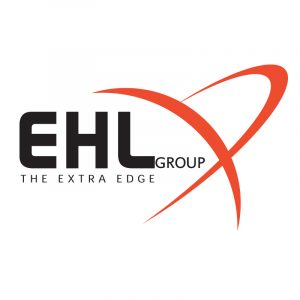Filter Basics for Food and Beverage Processors with EHL Group partner Donaldson
EHL Group and Donaldson Filtration understand that as a food or beverage manufacturer, you’re under a deadline to comply with the federal Food Safety Modernisation Act (FSMA) or similar local policies or directives, by developing a hazard analysis and critical control point (HACCP) plan or Hazard Analysis and Risk-based Preventive Controls (HARPC) plan. Perhaps you’re in the process of making updates to your facility. There is no better time to review the design of your Filter (s) and Filtration system, which stands at the very centre of food safety.

As you examine your process and facility, pay attention to two main areas of need for filtration:
- Where contaminants are first generated or introduced; and
- Where the process has further exposures to risk.
First, EHL recommend you address your utility sources and where steam, gases such as nitrogen, and compressed air are generated or bulk-stored. This area is a prime location for oil, moisture, debris, and bacteria—more so if you pull your air or water from supplies that have questionable quality.
Plan to pre-filter at this location. Elements of approximately 10 microns will capture larger particles and 95-98 percent of all contaminants—an acceptable level for industrial applications, such as washing or cleaning and sterilizing equipment in place (CIP/SIP). Pre-filtration upstream will help minimize replacement costs and downtime by protecting the most expensive fine-fiber filters on your process line. Well or river water carrying a greater amount of debris may require a series of 50-, 20- and 10-micron pre-filters and polluted air may need more than one compressed air pre-filter, especially when used in food contact applications.
A sample filtration plan for a yogurt processing facility
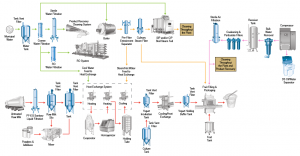
Not all contamination can be prevented at its source, so next you need to identify critical control points on your process line—wherever there is opportunity for new contamination, or where ingression would be irreversible. Here, you’ll use point-of-use, sterile-grade elements, normally .2 microns or smaller. Some of these critical control points are:
Mixing and storage tanks. Undesired bacteria can easily breed in these locations, and oxygen may also spoil some products. Inert nitrogen makes a good tank buffer before you add your ingredients. First, though, be sure to filter the nitrogen to remove potential impurities from tanks, compressors, and hoses.
Intermediate steps and ingredients. Wherever there’s a new step or ingredient introduced in your process line you have new opportunities for contamination. Later additives may be flavoring or seasoning, preservatives, or emulsifiers. In soda, it’s carbonated CO2. Consider filters for each new ingredient—as well as for any new gas, steam or air process involved.
Final processing and packaging. To remove any surviving contamination, plan to filter at the final process step. In water bottling, for example, a final membrane filter is recommended. Packaging itself can be a risk. Wraps and seals that come into contact with the food or beverage should be blasted with culinary steam to kill any microbes picked up in transport or storage.
Once you’ve identified the correct locations for filters, consider the quality of your equipment and your choice of elements. Watch for ageing or malfunctioning components such as air compressors, which are a frequent source of oil leaks. Pipes and housing can flake or develop crevices that trap decay.
Stainless steel systems are specified in most standards and guidelines; but if components are not 3-A certified, they can still have hidden risks, including:
- Poor welds with rough areas;
- A bead-blasted surface rather than one that is electro-polished;
- Pipe joints with a flange or national pipe thread (NPT) instead of a sanitary connection such as Tri-Clamp® sanitary clamps.
This symbol means equipment has been third-party verified by 3-A Sanitary Standards,
Inc.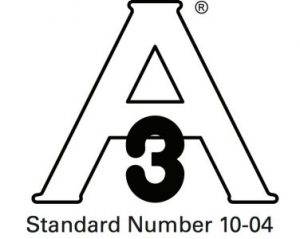
Don’t confuse a “3-A compliant” claim with “3-A Certified”. Only certified equipment is independently verified to have a sanitary design, which reduces the number of harbour points where bacteria can gather and multiply.
Filter ratings cause some confusion too. A micron rating is only the particle size that a filter is designed to catch. Efficiency is the percentage of capture in that micron range. You need both to select the right elements. A filter labelled 1 micron may sound safe, but may be only 85% efficient (effective). The reverse can also be true. A 10-micron filter that provides 5-log efficiency (99.999%) will be too fine for pre-filtering. The terms “absolute” and “nominal” are also important. Absolute filter media can achieve efficiencies of 99.98% or greater while a nominal filter typically provides 60% to 98% efficiency at that same micron size.
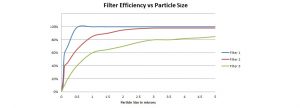
Three one-micron filters can have different efficiency ratings
Once you’ve weighed ratings and checked for certification, you can move on to other considerations:
- Depth-loading capacity (retention);
- Number of sterilization cycles the element can safely tolerate;
- How often the element will need changing (filter life); and
- Flow rates, which drive energy costs.
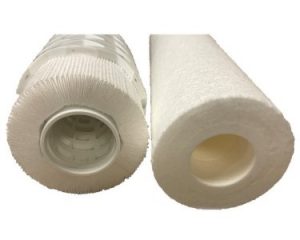
Traditional melt-blown filter (right) compared with a pleated cartridge filter (left)
All of these performance factors contribute to total cost of ownership. A pleated liquid cartridge filter that costs more initially may last longer and save you costs compared with a common melt-blown filter.
Safe and cost-effective filtration is all about the right efficiency at the right micron size in the right location. Every process is unique, but a good starting point may be a prepared filtration map. Ask your EHL Group specialist to assist with a filtration map development
Credit: By Christopher Lehmann, Donaldson Process Filtration
To get started, contact EHL Group, your Donaldson Filtration specialists today
E: solutions@ehlsolutions.nz.w3pcloud.com
MELBOURNE OFFICE
PO BOX 4011
Email: solutions@ehlsolutions.nz.w3pcloud.com
Phone: +61 (0) 3 98491928
Mob: +61 42 138 0442
AUCKLAND OFFICE
146D Harris Road, East Tamaki
PO Box 58923, Botany 2163,
Auckland, New Zealand
Email: solutions@ehlsolutions.nz.w3pcloud.com
Phone: +64 9 273 9153
NEW PLYMOUTH OFFICE
19 Corbett Road, Bell Block 4373,
PO Box 717, New Plymouth 4340,
Taranaki, New Zealand
Email: solutions@ehlsolutions.nz.w3pcloud.com
Phone: +64 6 755 2400

